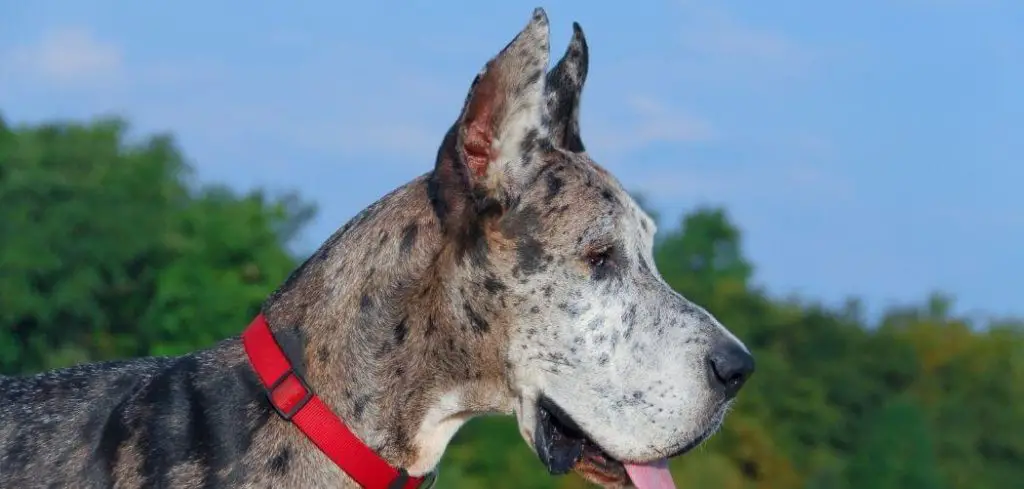If your dog is experiencing labored breathing and has stopped eating, it’s natural to be alarmed. These symptoms can point to serious health concerns that need prompt attention.
We outline the common causes of dog labored breathing and not eating, what you can do at home, and when to seek veterinary help.
Dog Labored Breathing and Not Eating — Why It Happens
When a dog struggles to breathe and also refuses food, it often signals an underlying health problem that’s affecting their ability to function normally. Respiratory distress, heart disease, pain, anxiety, and systemic illness can all lead to these symptoms.
Breathing difficulties can make eating uncomfortable or impossible, while illness or weakness may sap appetite and energy.

Common Causes of Dog Labored Breathing and Not Eating
Congestive Heart Failure
Heart disease, especially in older dogs or those predisposed by breed, can lead to congestive heart failure (CHF). This condition causes fluid buildup in the lungs and around the heart, making breathing laborious.
You may notice your dog coughing, breathing rapidly even at rest, and showing little interest in food. Their gums might appear pale or bluish.
Lack of appetite often accompanies CHF as the dog feels weak, nauseous, or simply exhausted from struggling to breathe. This condition requires immediate veterinary intervention.
Respiratory Infections or Pneumonia
Serious infections like kennel cough or bacterial pneumonia can severely impact a dog’s respiratory function. Coughing, nasal discharge, wheezing, and a high fever may be present.
Breathing may become shallow, labored, or noisy. The infection and fever often reduce appetite, and your dog may seem lethargic and withdrawn.
Severe respiratory infections can progress rapidly and are especially dangerous in puppies, older dogs, or brachycephalic (flat-faced) breeds.
Pain from Internal Injury or Illness
Dogs in pain often show subtle or confusing signs like labored breathing and not eating. Abdominal pain from pancreatitis, internal injury, or gastrointestinal obstruction can result in shallow, guarded breathing.
Pain also affects a dog’s appetite, leading them to refuse food even if they seem hungry. Look for signs like whining, restlessness, or tensing when touched.
Underlying causes of pain require diagnosis and management—don’t wait for symptoms to worsen.
Lung Disease or Cancer
Diseases that affect the lungs—such as chronic bronchitis, pulmonary fibrosis, or lung tumors—can make it difficult for your dog to get enough oxygen.
You may notice open-mouth breathing, rapid respiration, or your dog standing with their neck extended to try to breathe easier. Loss of appetite is common, either from the disease itself or associated nausea.
Weight loss, fatigue, and persistent coughing can be warning signs of a chronic or serious condition.
Anemia or Internal Bleeding
A sudden drop in red blood cells can result in oxygen deprivation, making breathing difficult. Anemia may be due to internal bleeding, parasites, toxins, or autoimmune disease.
Dogs with anemia may show pale gums, weakness, and shortness of breath. Because their energy is so low, they’ll often avoid food.
If you notice collapse, labored breathing, or extreme lethargy, this is a medical emergency.
Anxiety or Stress
In some cases, anxiety can cause dogs to breathe rapidly or appear to struggle for breath. Panting, whining, and pacing often accompany these episodes.
Appetite loss is common during periods of stress, especially if your dog has recently gone through a change—such as moving, boarding, or the loss of a companion.
Although anxiety isn’t life-threatening like the other causes listed, it can still seriously impact your dog’s health and quality of life if left unmanaged.
What to Do If Your Dog Is Labored Breathing and Not Eating
Start by keeping your dog calm and in a quiet, well-ventilated area. Avoid exerting them or causing additional stress.
Monitor their breathing rate and effort. If you see open-mouth breathing, flaring nostrils, or the abdomen working hard with each breath, this is more than just panting.
Offer fresh water but don’t try to force food. You can tempt them with bland, easy-to-digest foods like boiled chicken and rice if they seem interested.
Try to take note of other symptoms like coughing, nasal discharge, fever, vomiting, or lethargy. These details will help your vet narrow down the possible causes.
Avoid giving medications unless instructed by your vet, as some may worsen respiratory issues or interfere with diagnostics.
When to Call or Visit Your Vet
Any dog with labored breathing should be seen by a vet as soon as possible, especially if they’re also refusing food.
Contact your vet immediately if you notice:
Open-mouth breathing or gasping
Blue, pale, or gray gums
Rapid breathing even while resting
Collapse or inability to stand
A distended abdomen
Persistent coughing or wheezing
No interest in food for more than 24 hours
These symptoms often indicate a serious condition like heart failure, infection, or internal bleeding and should not be ignored.
Read more: Old Dog Breathing Heavy and Not Eating (Should you be concerned?)
Key Takeaway
When a dog has trouble breathing and stops eating, it’s a red flag for potentially life-threatening health issues.
Whether the cause is cardiac, respiratory, internal illness, or even anxiety, it’s critical to act quickly.
Stay calm, keep your dog comfortable, and get them evaluated by your vet—especially if their breathing is visibly labored or their appetite has disappeared.
Early intervention can make a life-saving difference.
